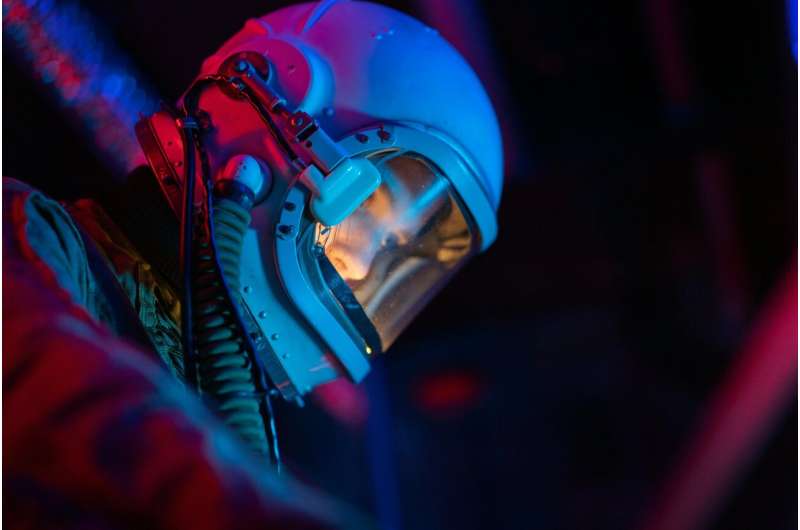Credit: Mikhail Nilov from Pexels
The structure and function of the kidneys is altered by space flight, with galactic radiation causing permanent damage that would jeopardize any mission to Mars, according to a new study led by researchers from UCL.
The study, published in Nature Communications, is the largest analysis of kidney health in space flight to date and includes the first health dataset for commercial astronauts. It is published as part of a Nature special collection of papers on space and health.
Researchers have known that space flight causes certain health issues since the 1970s, in the years after humans first traveled beyond Earth's magnetic field, most famously during the first moon landing in 1969. These issues include loss of bone mass, weakening of the heart and eyesight, and development of kidney stones.
It is thought that many of these issues stem from exposure to space radiation, such as solar winds from the sun and Galactic Cosmic Radiation (GCR) from deep space, which the Earth's magnetic field protects us from on Earth. As most manned space flights take place in Low Earth orbit (LEO) and receive partial protection from Earth's magnetic field, only the 24 people who have traveled to the moon have been exposed to unmitigated GCR and only for a short time (six to 12 days).
Nobody has studied what changes might be happening in the kidneys and other organs as a result of conditions that would be experienced during space travel beyond Earth's magnetic field over longer periods.
In this study, a UCL-led team of researchers from over 40 institutions across five continents conducted a range of experiments and analyses to investigate how the kidneys respond to space flight.
This included biomolecular, physiological and anatomical assessments using data and samples from 20 study cohorts. This included samples from over 40 Low Earth orbit space missions involving humans and mice, most of which were to the International Space Station, as well as 11 space simulations involving mice and rats.
Seven of these simulations involved mice exposed to simulated GCR doses equivalent to 1.5-year and 2.5-year Mars Missions, mimicking space flight beyond Earth's magnetic field.
The results indicated that both human and animal kidneys are 'remodeled' by the conditions in space, with specific kidney tubules responsible for fine tuning calcium and salt balance showing signs of shrinkage after less than a month in space. Researchers say the likely cause of this is microgravity rather than GCR, though further research is required to determine if the interaction of microgravity and GCR can accelerate or worsen these structural changes.
The primary reason that kidney stones develop during space missions had previously been assumed to be solely due to microgravity-induced bone loss that leads to a build-up of calcium in the urine. Rather, the UCL team's findings indicated that the way the kidneys process salts is fundamentally altered by space flight and likely a primary contributor to kidney stone formation.
More information: Keith Siew et al, Cosmic Kidney Disease: An integrated panomic, physiological and morphological study into spaceflight-induced renal dysfunction', Nature Communications (2024). DOI: 10.1038/s41467-024-49212-1
Journal information: Nature Communications , Nature
Provided by University College London
























